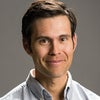Philip Henderson sounds exhausted.
“I’ve been busy,” he says, his voice cracking over the phone. “But good busy.”
Henderson, the 59-year-old team leader of Full Circle Everest, is driving back to his home in Cortez, Colorado, after speaking to members of the Rotary Club in nearby Durango. It’s late August, nearly three months since his team made international headlines by becoming the first all-Black expedition to reach the highest point on the planet. Since then, have received a flood of interview requests. He tries not to turn any of them down.
“If it’s an in-person request, can you pay for travel? If it’s an online presentation, I figure out which member’s story will resonate with the audience,” he says. “If they can’t pay for travel, I can sometimes use our nonprofit funds to pay for someone to get there.”
For Henderson, such speaking trips are almost as important as the adventure. Full Circle Everest is his brainchild—he believed an expedition comprised solely of Black climbers could inspire other people of color to pursue their dreams. The world of high-alpine mountaineering is mostly white, with just a handful of Black climbers who have ever reached Everest’s summit.
“The expedition happened and it ended, but it’s not over,” Henderson says. “Now we have to talk to people and tell our story. We have something we owe those people who followed us the whole way.”
When he is speaking to a Black audience, Henderson says that he stresses the significance of self motivation, and how the inspiration to pursue objectives outdoors must come from within.
“There are outdoor activities that people of color haven’t always done. Maybe their parents told them not to, or the industry says don’t do it,” he says. “But if there’s something inside you saying, I want to do that, then you should absolutely make it happen.”
That attitude helped Henderson throughout his career in the outdoor industry; often he was the only Black person on the trail. He was an instructor with the National Outdoor Leadership School for more than 20 years and led climbing expeditions on multiple continents. In 2012, he ventured to Everest to try and reach the top. He got sick, and the illness kept him from his goal. That year, 11 climbers died on the mountain.
The experience taught him how deadly Everest can be. For the Full Circle Everest climb, Henderson remained in Base Camp to guide the expedition via radio, while climbers Manoah Ainuu, Eddie Taylor, Rosemary Saal, Demond Mullins, Evan Green, Thomas Moore, and James Kagambi pushed up the mountain alongside Sherpas and a film crew. Another climber, Fred Campbell, ascended partway up but turned back due to altitude sickness. Henderson says he couldn’t sleep as the team ventured higher.
“At one point we had seven people in the Death Zone,” he says. “One call came in that Manoah was on the summit. Then another, and another. It’s Everest, so you always know that shit can happen. At some point it was like, holy shit, everybody summited.”
Henderson will keep telling his story until requests abate, but he also believes that Full Circle Everest will grow. He envisions expeditions to other mountains. And he wants to attract investment to projects that make the outdoors more welcoming to Black people.
“I ask people all the time, ‘How do we keep the momentum going?’ ” Henderson says. “More organizations are talking about Black Lives Matter and diversity and inclusivity. It’s up to them as well to continue to walk the talk. We’re only part of the movement.”


